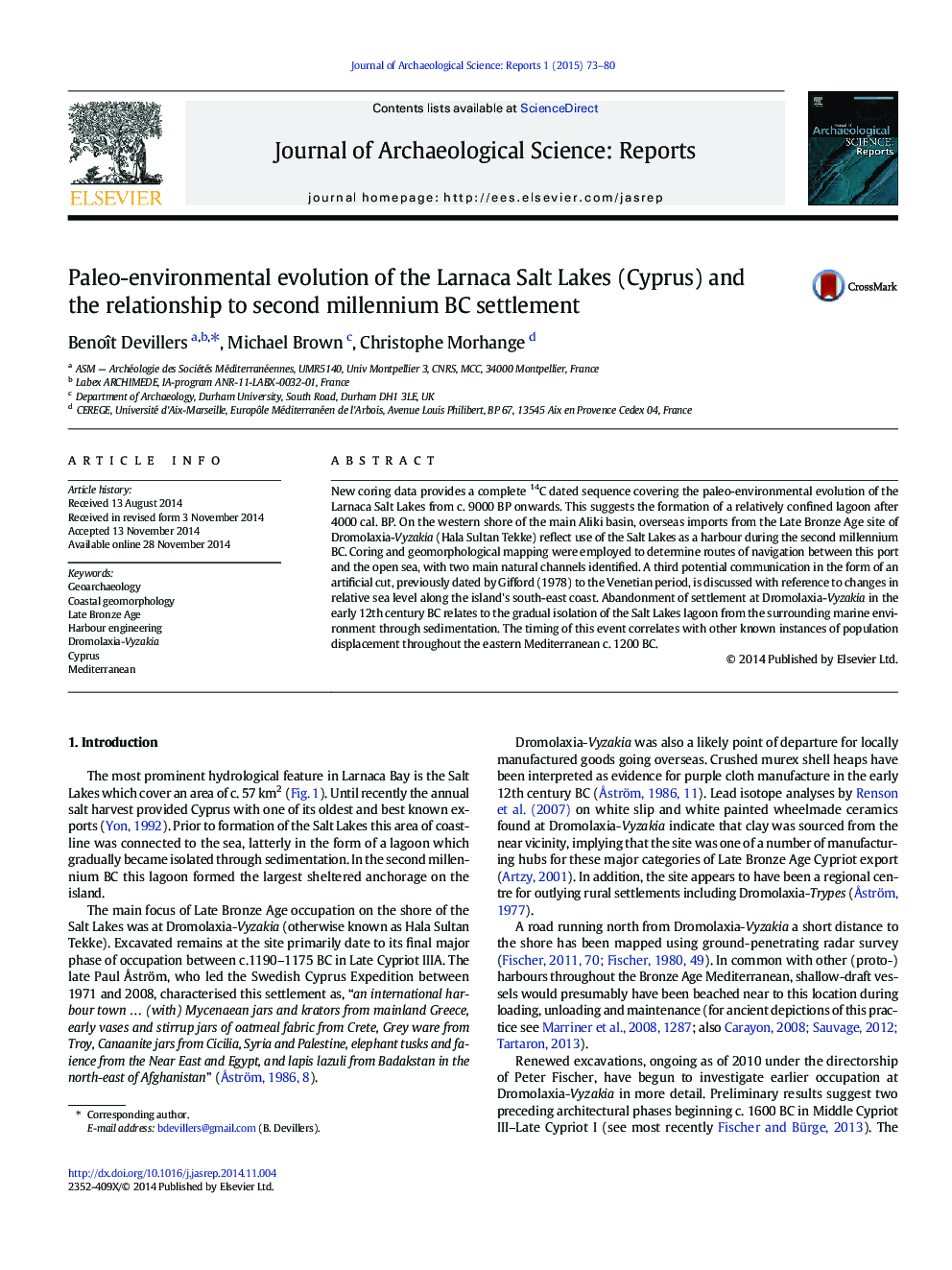| کد مقاله | کد نشریه | سال انتشار | مقاله انگلیسی | نسخه تمام متن |
|---|---|---|---|---|
| 1037806 | 1483942 | 2015 | 8 صفحه PDF | دانلود رایگان |
New coring data provides a complete 14C dated sequence covering the paleo-environmental evolution of the Larnaca Salt Lakes from c. 9000 BP onwards. This suggests the formation of a relatively confined lagoon after 4000 cal. BP. On the western shore of the main Aliki basin, overseas imports from the Late Bronze Age site of Dromolaxia-Vyzakia (Hala Sultan Tekke) reflect use of the Salt Lakes as a harbour during the second millennium BC. Coring and geomorphological mapping were employed to determine routes of navigation between this port and the open sea, with two main natural channels identified. A third potential communication in the form of an artificial cut, previously dated by Gifford (1978) to the Venetian period, is discussed with reference to changes in relative sea level along the island's south-east coast. Abandonment of settlement at Dromolaxia-Vyzakia in the early 12th century BC relates to the gradual isolation of the Salt Lakes lagoon from the surrounding marine environment through sedimentation. The timing of this event correlates with other known instances of population displacement throughout the eastern Mediterranean c. 1200 BC.
Journal: Journal of Archaeological Science: Reports - Volume 1, March 2015, Pages 73–80
